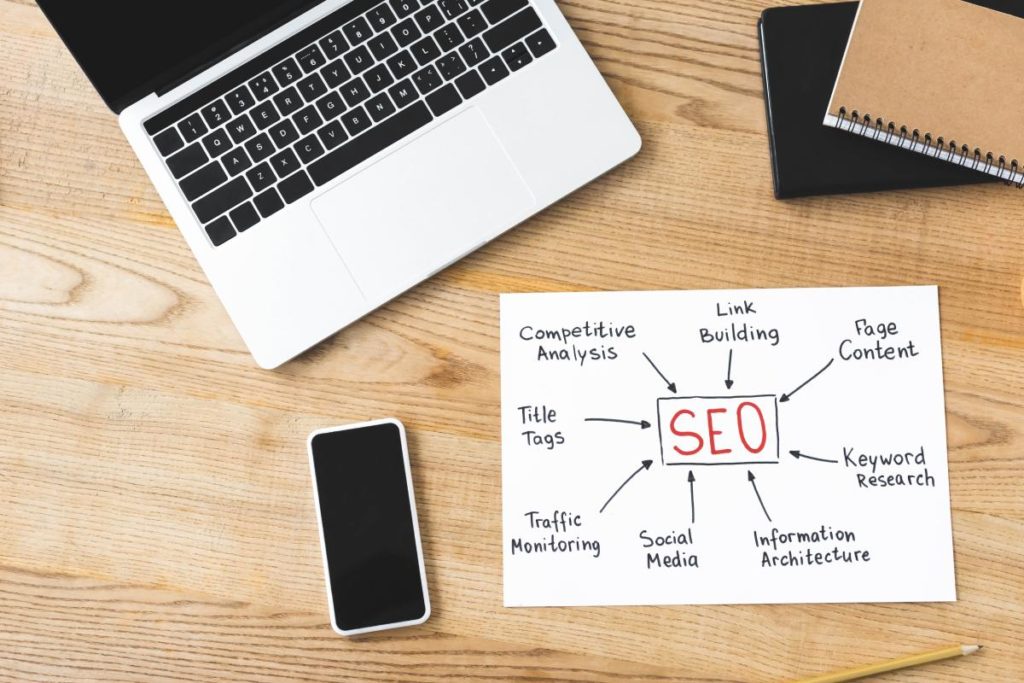If you’re new to the world of website-ownership, it can be a little hard to grasp everything that SEO entails. But to all the non-techies out there, worry not — we’ve compiled a complete guide on the basics of search engine optimization.
After reading through this article, you should have a better understanding of what it means to optimize your site for search engines, what impact this has on your business in the long run and how to get started…
So let’s get started!
- What is SEO and why does it matter?
- Jargon commonly associated with SEO
- How you can improve your site’s SEO
Note: To keep this article concise, we’ve focused on the basics of SEO — so if you want a deeper understanding, check out our comprehensive SEO guide here.
What is SEO and why does it matter?
First, if you don’t already know what SEO is or how it benefits your site, let’s break it down:
Search engine optimization (or SEO) is the practice of structuring your website and content in such a way as to make them more accessible and visible to web crawlers like Googlebot. By making these small changes, not only will your site rank higher when people search for topics related to your business or industry, but you’ll show up in the Search Engine Result Pages (or SERPs) more often.
Let’s use an analogy:
If you’re looking to lose weight or get into shape, you might join a gym, hire a trainer, or start a nutrition program. But, we can all agree, you won’t go to the gym once and wake up the next day 20 pounds lighter or have the ability to run a marathon.

Losing weight or getting in shape takes time and persistent effort. SEO is no different.
With workout routines and nutrition programs, what works best for one person might not work for someone else. Not to mention, there are hundreds of different ways to optimize your website.
Just like working out, results don’t happen overnight. No matter which strategies or tactics you use, your success is dependent on your consistent effort for improvement.
All of the seemingly small, sometimes tiny, steps you put in can add up to dramatic results over time.
The big difference from getting fit is, with SEO, you are in a competition to be the most fit. This means, your goal is to beat out the competition that are working just as hard to claim the top spot in search results.
Let’s break down some of the jargon commonly associated with SEO
Search Engine
A search engine is what people use to find websites by entering in a phrase or words (see keywords below). Google and Bing are the two most popular examples, but there are several smaller ones as well.
What’s important to know is that when you search your keyword, not only do search engines return pages that contain that keyword, but they also sort the result based on what they deem to be the right structure and accompanying data that marks the page as relevant for your specific inquiry. This is where page rank comes in.
Page Rank
Behind the scenes, search engines are constantly crawling through the internet to assign a score to each website it indexes. This score is known as the Page Rank.
Several factors determine how well a web page ranks for a particular search—however the short of it is: the better ranking a page has, the more likely and higher up it will appear in search results.
Keywords
You should be able to describe what each page of your website is about in a few words. These are your keywords, and they’re the main way people find your website through a search engine.
Your keywords should be prominent within the title and content of your pages. That way search engines can more easily determine whom your site is relevant to and assign a rank accordingly.

So How Can You Improve Your Site’s SEO?
The general idea behind SEO is to make your site a safe, welcoming environment for search engines, so that they can index it easily. To do this, you need to make sure that your website contains the following:
1) Publish unique & relevant content
One of the most important things you can do when developing a new site is to write evergreen content — that is, content that doesn’t become outdated with time.
Make sure this content includes relevant keywords that people are searching. These keywords should be used organically and sparingly as stuffing your content with too many keywords will be noticed by Google—harming your page rank.
2) Optimize your use of keywords in H1 tags
Each page should contain only one H1 tag. The H1 tag helps, not only with your onsite SEO, but it also effectively engages users and captures their attention since it is larger and most often bolder. To adhere to search engine best practices, headlines should contain the relevant keyword target for the given page.
3) Use high-quality internal & external links
Ensure that the internal links of your site are updated and relevant. They should be related to the content on your site, and go back to what makes your website unique and special. A high-quality internal link is one that appears naturally on a page, does not require users to click through to another website, and is unmistakable in its purpose.
For example, if you have a page about veganism in the UK, an image of a plate of vegan food would be an excellent choice for an internal link — it’s obvious what the user should do with it!
External links are those which point to other websites (sometimes called “outbound links”). Just like with internal links, these need to be relevant to the content and helpful for your audience.
4) Remove all broken links
Broken links are links that either lead somewhere you didn’t intend, or don’t lead anywhere at all. This usually happens when the linked website is updated or the content is deleted. In addition to frustrating your customers, broken links on your website can also harm your status with Google—leading to a much lower search rank score.

So how do you check if there are any broken links on your site?
There are many free tools available to scan your website’s links for errors. One of our favorites is Google Search Console. Once you sign up for an account, simply input the URL of the site, and it’ll check all the external links. It’s quite popular and easy to use too!
5) Foster a friendly user experience across all platforms, i.e. desktop & mobile
People using search engines have come to expect a certain level of usability and user experience, so make sure your site works well on desktop, mobile devices, and other platforms like tablets.
But, improving device compatibility does more than improve your customer experience. When Google assigns your website a page rank score, it primarily does so with the mobile version of your website. If your site looks good and functions well on mobile devices, users will be able to use it easily and Google will rank your site higher in their results.
6) Validate your robot.txt
When Google and other search engines examine your website, they’ll be looking for a file called robot.txt. This is like the road map for web-crawling robots on how they can easily navigate your website.
However, if your robot.txt file isn’t set up properly, it can prevent search engines from accessing or indexing your site properly. Note that almost all WordPress SEO plugins provide the ability to create and manage your robot.txt file.
Use this online tool to test your robot.txt file or read up on all things robot.txt.
7) Improve Website Performance
Search Engines, particularly Google, track how fast and efficient your website is. You could be producing the most valuable content around, but if your site is slow, search engines will penalize you for it.
Several factors determine how Google ranks a page’s load speed, but together they call these factors Core Web Vitals. The main three vitals they monitor are:
- Largest Contentful Paint – The time it takes the largest element on your web page to load, e.g. a large hero image, or video
- First Input Delay – The time before a user has the ability to interact with a page while it’s loading
- Cumulative Layout Shift – The visual shift in site content as page elements load that may cause a user to erroneously click something, or lose their place reading
You can see how your website scores by running it through GTMetrix, Google’s Website Testing Tool or Pingdom’s website speed test.
We dive a little deeper in our post on how to decrease WordPress load speeds and how to audit your website for better performance.
Conclusion
SEO is a constantly evolving effort, so what may be possible now may not be possible tomorrow. At the very least, it is important to keep up with current best practices and learn how to optimize your site for search engines.
To empower anyone to achieve SEO success, we offer an easy to use SEO Strategy Platform allowing you to develop and implement a tailored visibility strategy for your website without hiring an SEO expert. If you want to chat about anything SEO, send us a note or schedule a call with us.


